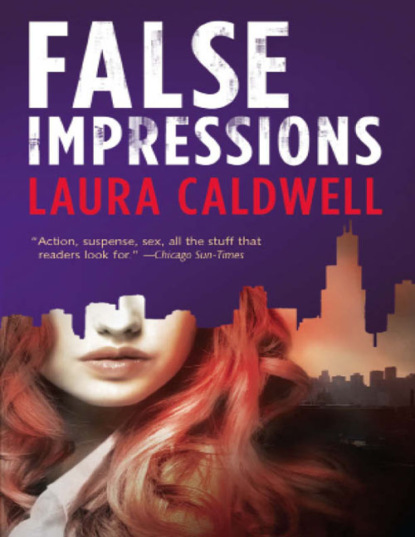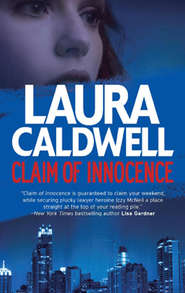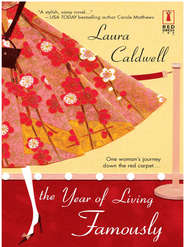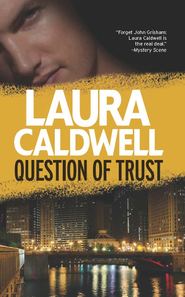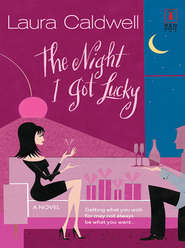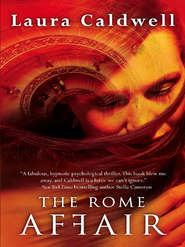По всем вопросам обращайтесь на: info@litportal.ru
(©) 2003-2024.
✖
False Impressions
Автор
Год написания книги
2018
Настройки чтения
Размер шрифта
Высота строк
Поля
“What?”
“Don’t worry about it.” She gave me a sly wink.
I wasn’t sure I was ready to meet a possible new date, but I was still too distracted by the previous night to dwell on it with her.
“Okay, but Madeline,” I said, hanging my coat on a rack, “what happened to you last night?”
She stood by the file cabinet, her hand on the drawer. She turned. “What do you mean?”
“You disappeared.”
“What do you mean?” she repeated.
“You got up, I assumed just to go the bathroom since you didn’t say goodbye, but instead—bam!—you were gone.”
“Bam?” Madeline said, in a funny, slightly mocking tone.
“Well, that’s how it felt, like suddenly you’d just disappeared.” I crossed my arms over my chest. “Thanks for the drinks and everything, by the way. I don’t want to seem ungrateful, but I was worried.”
“Of course,” she said. She opened a drawer, flipped through some files. “Isabel, I’m sorry. I do that sometimes.”
“Do what?”
“I find I’m done with the night, and I leave. It’s nothing to do with you. It’s a bad habit of mine. And I apologize.” Something struck me as slightly false about her words, but I couldn’t put my finger on what. Madeline sighed. “I find goodbyes to be pedestrian. They don’t add anything to life.”
I wanted to ask her where she’d gone after she’d left the club—home?—but Madeline pulled out a file, then brought it to a table in the center of the room and opened it. Inside were photos of a sculpture of sorts, tall and oblong and made of white glass swirled with silver.
The photos made me remember something. “My friend Maggie bought a sculpture last summer that was a little bit like this. At the Old Town Art Fair. Do you show there?”
I looked at Madeline and saw her lips, encased today in a pale pink gloss, suddenly purse. “No,” she said. “I don’t.” The implication was clear—there was no chance she would show art at the Old Town Art Fair.
I thought about the fair, which happened in Chicago every June. The nucleus was at the intersection of North and Wells. The fair spread from there spanning blocks and blocks in every direction, holding stands showing art work, sculpture, sketches, prints and furniture.
“Those are local artists,” Madeline said.
“You don’t represent anyone from Chicago?”
“No, I do, it’s just that, in general, those artists are amateurs. I represent a different level of art.” She didn’t sound haughty about it, just matter of fact.
“I didn’t always,” Madeline continued. “I began my career working with what’s called outsider art.”
“Outsider art,” to my unknowledgeable ears sounded like art that was sold outside—like, say, at Old Town Art Fair.
But Madeline clarified the concept for me. An outside artist, she said, was one who had no classical education in traditional channels. Instead, what was prized about great outsider art was its naiveté, which led, somehow, to pure aesthetic genius.
She seemed in a reflective mood, so I stayed silent.
“I liked the discovery and the thrill of finding outsider art,” she said, as she arranged the photos of the sculpture on the table. “I liked finding something no one else had realized was so wonderful. I opened a gallery in Bucktown showing original works. But eventually my tastes evolved and I got into secondary market work.”
“What’s that?”
“Put simply, it’s buying dead artists’ works from around the country and Europe.”
The reason for getting into secondary art, she said, was not because she had some highbrow vision of what art should be. Rather, she became mesmerized by technique, by artists who had either studied their particular techniques for years or occasionally by current artists who had shown mastery of technique in a short time. From there, her tastes and her gallery had grown eclectically in all directions.
“I like to just wait and see what happens,” she said.
I could see again what Mayburn meant when he told me Madeline lived for her gallery. Madeline Saga lit up when she talked about art. Her eyes were wide with wonder, her words faster than their usual calm cadence. “Some of the brilliance of these artists,” she continued, “the professional brilliance—combined with their creativity…well, that, for me, is dazzling. I don’t often see that in street art.”
I thought I understood what she meant. I told Madeline about the sculpture that Maggie bought at the art fair. It was round and made with white plaster, on which the artist had placed broken white tiles, forming a mosaic pattern. It was a perfect accent for Maggie’s sleek, light and modern South Loop apartment. Although maybe that would change, since Maggie was now living with Bernard, a Filipino professional musician, whose tastes tended toward a black-and-red Asian style.
“This sculpture my friend bought cost around a hundred and fifty dollars,” I told Madeline. “So I suppose that’s different than—” I looked down at the pictures “—a sculpture such as this one.”
“Yes. But of course, there are so many facets of art appreciation.” She lifted one of the photos to her face. “It isn’t simply about price. The price is based on the techniques employed, as I mentioned, but also on the complexity the art carries in its message. Then there’s also the question of whether it’s derivative of another artist.”
“Like art that was recently painted but looks like an Andy Warhol,” I said, remembering something else I’d seen at an art fair.
“Exactly,” Madeline said.
“Thank you for teaching me about this.”
“It is my distinct pleasure.” She paused and put a hand over mine that was on the table. Her hand felt so light, as if most of Madeline Saga was filled with air.
We heard the trill of a bell then, indicating someone had come in the front door.
“He’s here,” she said.
“Who’s here?”
Madeline clapped. “Let’s go.”
11
Madeline led me into the gallery. I stalled for a second, standing next to the jeweled tree sculpture, taking in the man who’d just entered.
He was gorgeous. You could see that, even from the side. He appeared like any normal guy, wearing jeans and a brown velvety jacket and standing near the painting of the woman in two different times. But like Madeline, something was different in the air because of him. Something felt fun, electric. Or maybe it was Madeline’s reaction to him.
“Isabel Smith,” she said, “this is Jeremy Breslin.”
Jeremy Breslin turned, took some steps toward me and shook my hand. I looked up at him, and into bright, navy blue eyes. Mesmerizing.
I started to pull my hand away, afraid that if I kept gazing into those eyes, I might say something silly. But he held on to my hand. He looked at me, very curiously.
He’s looking at all of me. I don’t know why I thought that, but that’s what it felt like. Again, it reminded me of Madeline, the way she took in the whole of things.
Madeline explained that Jeremy operated a hedge fund, that he was originally from Boston and his wife’s family had been clients of hers for years.
During this introduction, Jeremy kept holding my hand. When Madeline stopped, he seemed to realize it and let my hand go. It felt cold without his touch.





